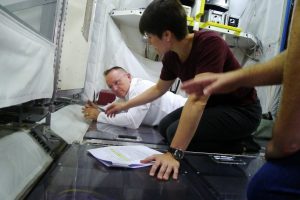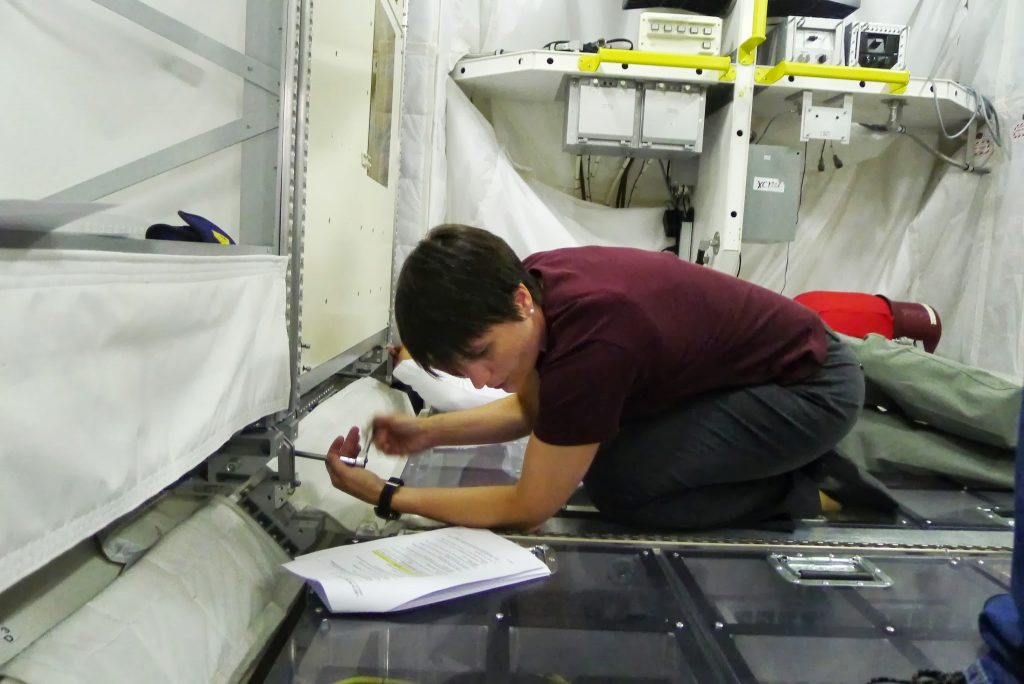Back from my vacation and ready for two weeks of training at home-base: the European Astronaut Center in Cologne, Germany.
This week is dedicated to Europe’s laboratory in space, the Columbus module. Not so much to the science that we do in Columbus – that’s what we call payload training and it’s for another time. But rather the actual Columbus systems, from thermal control system to power supply or data management.
With my crewmate Butch I will receive specialist training this week. I’ll tell you more in the next days about the different levels of qualifications we can have on the ISS systems, but one thing to know is that at any time we need at least a specialist-trained crewmember onboard for each ISS module/system. When European astronauts are on ISS, of course we’re the Columbus specialist!
Today Butch and I had several lessons on different systems, including what we call structure and mechanisms. That’s when we got to practice rotating a rack. Imagine that in your house you had wardrobes on all your walls, as well as the ceiling and the floor. That’s the way it is on the Space Station. Each of of these elements, that we call racks, is hinged on one one side and can be rotated, for example to provide access to neighboring locations for maintenance purposes. Some racks are easier than others to rotate and it’s good to have some practice with the trickier ones.
09/09/2013






